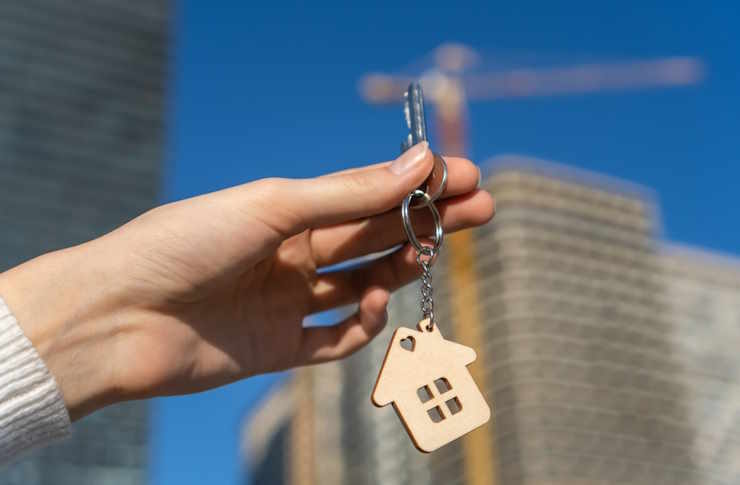Prefab Homes: The Future of Efficient, Sustainable Living
Prefabricated homes are reshaping how we build and live—combining faster construction, greener materials, and smart energy systems. Discover how modern prefab and modular designs integrate solar power, reduce waste, and offer affordable, customizable options for homeowners. Learn about costs, timelines, and environmental benefits to decide if a prefab home fits your lifestyle.

Solar Integration and Energy Efficiency in Prefab Homes
Many contemporary prefabricated homes are designed with energy performance in mind from the outset. Manufacturers frequently offer factory-installed solar arrays and pre-integrated energy systems, enabling a tighter fit between the panels, inverters, and the home’s electrical architecture. Because components are assembled in controlled factory settings, insulation, windows, air-sealing, and mechanical systems are installed with precision, which commonly results in lower ongoing energy use compared with conventional build methods.
Beyond rooftop panels, prefab builders often include high-performance building envelopes, LED lighting, efficient HVAC systems, and heat-recovery ventilation as part of a standard or optional package. These features reduce operational costs, improve indoor comfort, and make it easier for homeowners to reach net-zero or near-net-zero energy goals. The factory environment also simplifies quality control and testing, so systems that support energy efficiency arrive calibrated and ready to optimize performance on site.
Varieties of Prefab Homes: From Cozy Bungalows to Contemporary Estates
Prefab construction encompasses a broad spectrum of styles and sizes. Single-level bungalows remain popular for their accessibility, economical footprint, and straightforward layouts. For families or those needing more space, two-story modular homes provide additional square footage without sacrificing much of the time savings prefab methods offer.
On the other end of the range are large-scale modular homes and luxury prefab residences that mimic custom-built estates but take advantage of off-site manufacturing efficiencies. Contemporary architectural designs—characterized by open plans, large glazing areas, and minimalist finishes—are commonly realized through modular techniques, letting homeowners achieve modern aesthetics with consistent quality.
Each type preserves the core advantages of prefabrication: predictable construction schedules, reduced on-site labor, and the possibility for high levels of customization through factory-driven options and finishes.
Cost Considerations and Market Comparisons
Prefabricated homes can deliver cost savings through streamlined production, reduced waste, and shorter on-site labor needs. However, the total project expense extends beyond the base shell price. Buyers should budget for land purchase, site preparation including grading and drainage, foundation work, permits, and utility hookups. Transportation from factory to site and any crane or installation costs must also be factored in, particularly for remote locations or large modules.
Time to occupancy is another financial consideration. Faster assembly and weather-insulated manufacturing typically translate into fewer weather-related delays and lower interim financing costs. That said, customization, high-end finishes, or complex foundations can increase both price and timeline.
| Home Type | Average Cost Range | Construction Time |
|---|---|---|
| Basic Prefab Bungalow | $150,000 - $250,000 | 3-4 months |
| Custom Modular Home | $200,000 - $400,000 | 4-6 months |
| Luxury Prefab House | $400,000 - $800,000 | 6-8 months |
Prices, rates, or cost estimates mentioned in this article are based on the latest available information but may change over time. Independent research is advised before making financial decisions.
Benefits and Practical Considerations for Buyers
One of the strongest selling points of prefabrication is speed. With many components built simultaneously off site while groundwork and foundations are prepared, overall project duration often shrinks dramatically. Factory production also delivers consistent quality control: materials are stored and handled in stable conditions, and workmanship is overseen by repeatable processes.
Nonetheless, prospective owners should be mindful of local planning rules and building codes, which vary widely and can influence design choices and costs. Site access and logistics matter too; narrow roads, steep driveways, or difficult terrain may increase transport and installation fees. Warranty structures differ among manufacturers, so comparing coverage for structural elements, finishes, and systems is important.
Financing for prefabricated homes has become more accessible as lenders gain familiarity with modular construction, but it remains essential to confirm mortgage and construction loan terms early in the planning process.
Environmental Impact and Long-Term Sustainability
Prefab construction tends to generate less waste and use materials more efficiently because factories can optimize cut lists and recycle offcuts. Many builders incorporate sustainably sourced timber, low-VOC finishes, and water-conserving fixtures as part of their standard offerings. When combined with energy-saving systems and optional solar installations, prefab homes typically produce a smaller lifecycle environmental footprint than many conventional builds.
Moreover, the adaptability of modular systems supports future-proofing: components can be reconfigured, expanded, or even relocated in some cases, extending the useful life of the structure and reducing the need for complete demolition and replacement.
The Future of Residential Building
As building technologies and consumer preferences evolve, prefabricated homes continue to gain traction. Their ability to marry efficient manufacturing, sustainable practices, and flexible design makes them a practical choice for homeowners looking for quality, speed, and reduced environmental impact. While site-specific factors, local regulations, and personal preferences will always play roles in the ultimate decision, prefab housing has emerged as a credible and often advantageous alternative to traditional on-site construction.
For anyone considering a prefab home, start with a clear budget, research local regulations and site constraints, compare manufacturers and warranties, and request detailed timelines and cost breakdowns to make an informed choice.






